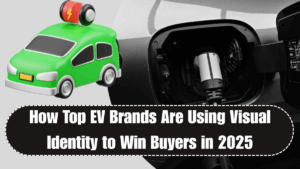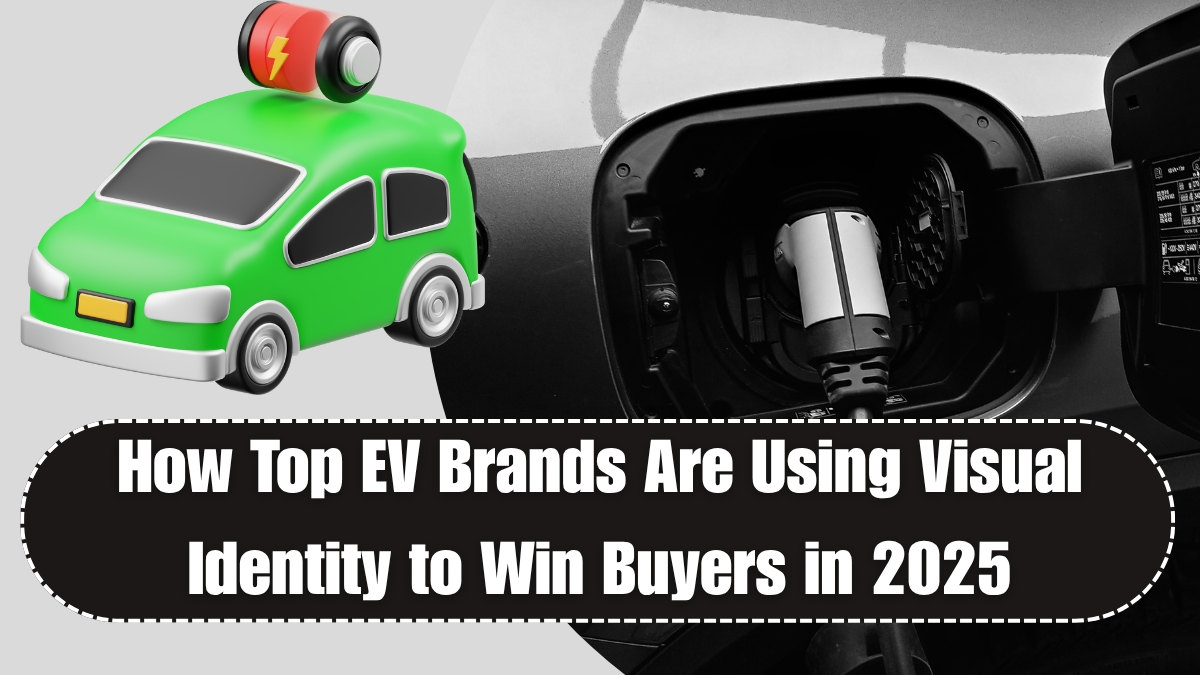The power of EV branding and visual identity has become a game-changer in 2025. As electric vehicles (EVs) flood global markets, consumers are no longer just buying based on performance or range—they’re connecting with a brand’s image, values, and the emotional appeal of its design language. With top manufacturers focusing on sleek logos, futuristic color palettes, and distinct aesthetics, EV branding is now a vital part of success.
In 2025, visual identity isn’t just about a badge on the bonnet. It’s about creating a complete story—one that reflects sustainability, innovation, and simplicity. A logo must now convey the future, a typeface must speak clarity, and a color scheme must feel electric yet trustworthy.

Reinventing Logos for an Electric Era
A key element of EV branding and visual identity lies in car logo design. Legacy automakers and new startups alike have embraced cleaner, flatter, and more digital-friendly logos that reflect the modern, emission-free future. Brands like Volkswagen, Kia, and Renault have redesigned their emblems to appear bold on screens and instantly recognizable on vehicle fronts.
Common trends in 2025 logo designs include:
-
Flat and minimalist shapes
-
Monochrome or two-tone themes
-
Digital-readiness for app and dashboard use
-
Hidden meanings within the graphic (e.g., movement, energy, or sustainability symbols)
These logos are no longer just symbols—they’re visual identities that connect emotionally with eco-conscious consumers.
The Role of Color, Typography & Motion
Color selection is more important than ever in EV branding. Soft blues, greens, and silver tones dominate EV color palettes in 2025, reinforcing trust, freshness, and the green-energy promise. But brands are also breaking the mold—some are using bold neon accents or gradient effects to express modernity and boldness.
Typography also plays a powerful role. Most electric brands now use geometric, sans-serif fonts that convey clarity and modernity. These are built not just for print or web, but also for car interface design, making them visible across in-car screens, apps, and charging station UIs.
Even animated logos are gaining traction—brief motion effects in vehicle startups or mobile apps create a futuristic feel and deeper brand connection.
Consistent Branding Across Every Touchpoint
Another vital part of EV branding and visual identity is brand consistency across every digital and physical space. The logo and colors must match across the car’s user interface, app experience, showroom displays, digital ads, and even the charging station design. Brands that maintain this uniformity build stronger recognition and trust.
Effective strategies used by top manufacturers include:
-
Unified tone of voice in campaigns
-
Eco-themed packaging and documentation
-
Sustainable material textures echoed in visual design
-
Branded charging cables, EV keys, and accessories
This holistic approach ensures that EV branding is more than a look—it’s a lifestyle.
Case Study Examples from Top EV Makers
Several leading EV companies are setting new benchmarks in EV branding and visual identity:
-
Tesla: Its minimalist “T” has become globally iconic, supported by a consistent color scheme, font, and dashboard visuals.
-
Polestar: Known for its sharp logo, white-gray theme, and ultra-clean typefaces, Polestar presents itself as tech-forward yet calming.
-
BYD: Leveraging red and silver, its design evokes strength and dynamism while staying rooted in global appeal.
-
MG ZS EV: The legacy brand now highlights its electric range with refreshed fonts and digital-forward presentation.
Each of these proves that great design, when done right, wins customer trust and market space.
FAQs
Why is visual identity important for EV brands in 2025?
A strong visual identity helps EV brands stand out in a crowded market, establish emotional connection, and reflect innovation and sustainability.
What are common trends in EV logo design?
Minimalism, flat design, monochrome themes, and digital-friendly formats dominate car logo design in 2025.
How do colors and fonts affect EV branding?
Color palettes communicate sustainability and technology, while clean fonts improve brand readability across digital interfaces and dashboards.
Which brands are leading in EV branding right now?
Tesla, Polestar, Kia, and MG are examples of brands using effective EV branding and visual identity strategies to build loyalty and recognition.
How does consistent branding improve customer trust?
Uniform design across the vehicle, app, packaging, and service experience ensures a cohesive identity that builds trust and strengthens the brand story.
Click here to know more.
